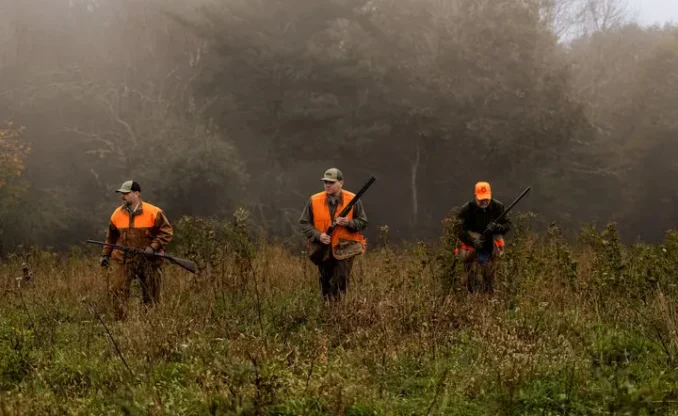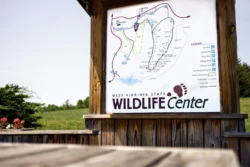Diseases in wildlife populations range from highly visible but generally insignificant (e.g., cutaneous fibromatosis in White-tailed Deer) to cryptic but extremely concerning for long-term sustainability of populations (e.g., Chronic Wasting Disease in cervids, chytridiomycosis in amphibians). They seldom are the result of a one-cause, one-effect scenario and are often a product of environmental and habitat changes, human activities, unnatural conditions, stress, pathogen changes, and other factors. Diseases are frequently impossible to eradicate in wildlife populations once they become established, and thus prevention of disease introduction is critically important for long-term population health. Responsive disease control measures are often expensive, open-ended, and time-intensive, but such measures may be necessary if certain diseases are introduced and become established in a population. Other management options such as eradication and treatment are often impracticable or inappropriate for wildlife, and except in threatened and endangered species, treatment and ‘rehabilitation’ do not generally serve a meaningful role at the population level.
Wildlife Disease Overview
The West Virginia Division of Natural Resources (WVDNR) is the agency tasked with monitoring and managing wildlife populations, and ensuring those populations are sustainable into the future, in West Virginia. In accordance with this duty, WVDNR wildlife and fisheries biologists conduct surveillance and monitoring activities for multiple wildlife diseases that may be an important source of mortality at the individual or population level. Some diseases are enzootic, which means disease occurs at an expected or predictable rate. An example of an enzootic disease in West Virginia is raccoon strain rabies in raccoons and some other furbearers in the eastern portion of the state. The U.S. Department of Agriculture- Animal and Plant Health Inspection Service (USDA-APHIS) uses an aerial dropped vaccine along a corridor extending north to south across the approximate middle of the state in attempt to control rabies and keep it from spreading into new areas.
Other diseases are epizootic, which means disease appears at a time or in a place where it does not normally occur or with frequency higher than expected. An example of an epizootic disease in West Virginia is hemorrhagic disease (“blue tongue” or “EHD”) in Whitetailed Deer. This disease has been detected with increasing frequency in West Virginia since the 1990s and multiple exotic viruses have been involved in outbreaks. Epizootic diseases often involve changes in etiologic agents, animal hosts, vectors of diseases, and the environment, which make them difficult to predict. Other challenges include difficulties in detecting disease, counting mortalities, determining scope of an outbreak, and obtaining disease surveillance samples. Public reports are crucial in helping WVDNR staff identify and respond to diseases in wildlife (see wildlife health surveillance). It is important to note that WVDNR will not send personnel to investigate every report or to remove sick or dead wildlife from private property in every case.
Some wildlife diseases, such as CWD, that are anticipated to cause population-level effects may necessitate management actions to attempt to prevent introduction of disease, control spread or increases in prevalence, or eradicate disease from a population. Treatment is not generally a viable option in wildlife populations (except in threatened and endangered species) and often simply serves to confuse the disease situation with expectations of an easy solution that does not require additional regulations, management actions, or human behavior changes. While disease eradication has been achieved in very limited circumstances, such as a 1972 Federal ban on DDT enabling population recovery of endangered raptors, eradication is often impossible or infeasible in wildlife. While control strategies including vaccination (e.g., oral rabies vaccine program), sanitation, and reactive regulations may respond to a visible problem and be easy to “sell” to stakeholders, control may be difficult to achieve in wildlife and is no substitute for prevention. The single most important strategy for managing wildlife diseases is prevention. Prevention strategies may include movement restrictions for live animals or carcasses, regulations such as feeding and baiting bans, and public education efforts.
While prevention strategies are generally inexpensive, can work with limited information and knowledge about wildlife and emerging diseases, and can work against unknown variables, a major downside is that public compliance with regulations may be difficult to achieve without strict enforcement and known or highly visible risks associated with disease establishment. Despite the importance and usefulness of prevention strategies, conservation agencies often face challenges relating to public stakeholders when it comes to compliance and implementation. Public attitudes often conflict with biological knowledge, the involvement of emotion and politics can muddle already-complex situations, and expectations of “high-tech” and easy solutions that do not require behavior changes or other individual efforts may contribute to public unwillingness to accept disease prevention strategies. Human activities are one of the most important sources of disease introduction and spread, and human associated pathogen pollution accounts for approximately 60% of emerging diseases in wildlife globally. Human activities that may lead to disease introduction or facilitate rapid spread of pathogens that cause disease include, but are not limited to:
- Trade and translocation of captive and wild animals (e.g., deer, amphibians, raccoons).
- Releasing lawfully or unlawfully possessed wild and captive animals into the
wild. - Feeding and baiting wildlife for any reason.
- Transport and improper disposal of wildlife carcasses and carcass parts.
- Improper use of pesticides, herbicides, rodenticides, and other toxicants.
- Improper disposal of human and agricultural waste products.
- Environmental contamination with lead (e.g., carcass waste).
Wildlife Health Surveillance
Due to agency personnel limitations, public reports are crucial in helping WVDNR staff to identify and respond to diseases in wildlife. Any wildlife that exhibit abnormal behaviors, appear to be sick, or are found dead from an unknown cause should be reported by contacting your local WVDNR office. You should be prepared to provide your location, contact information, the date you observed the animal(s), the number of affected animals, species (if known), and status (i.e., alive or dead, an abnormality, or signs of illness). Agency staff may ask you additional questions intended to help them assess the cause of the animal’s condition or if a disease process may be involved. Your reports may help WVDNR to detect diseases at a local scale, before they become established, and implement strategies to prevent or reduce the likelihood of wider-scale outbreaks. This is especially important for foreign and emerging animal pathogens not yet found in West Virginia, such as rabbit hemorrhagic disease virus serotype 2 (RHDV-2).
What is RHDV-2?
Rabbit hemorrhagic disease virus serotype 2 (RHDV-2) is a viral foreign animal disease that affects wild and domestic hares and rabbits (lagomorphs). It was first detected in the United States in domestic rabbits in 2018, and in 2020 was confirmed in wild rabbits in the southwestern U.S. While RHDV-2 is not currently found in West Virginia (see USDA map link), disease surveillance efforts and public reports may allow for early detection and implementation of management strategies for RHDV-2. Wild lagomorphs are ecologically important as a prey species for a wide range of avian and mammalian predators and are culturally important as a game species in West Virginia, so management actions to protect wild lagomorphs from a disease outbreak are crucial.
Lagomorphs infected with RHDV-2 may exhibit a range of mild to severe signs including lethargy, seizures, and sudden death. External signs of disease may not be apparent, but bleeding from the eyes, nose, and/or rectum is sometimes observed. The most common finding is likely to be multiple sick or dead rabbits in a localized area with no apparent cause of death (e.g., hunting, predation, roadkill). RHDV-2 is not infectious to humans or non lagomorph domestic animals, but the public should avoid handling sick or found dead lagomorphs or other wildlife as a general precaution since other pathogens could be involved. RHDV-2 is highly contagious among some lagomorph species, highly environmentally persistent, and often fatal for some infected species. Morbidity and mortality events associated with RHDV-2 will often involve multiple lagomorphs in a localized area. Members of the public should thus report any lagomorph mortality events where two or more cottontails, hares, or feral domestic rabbits are found dead at the same location from an unknown cause. Lagomorph mortalities as a result of an apparent cause, such as predation or road-kill, should not be reported to WVDNR.
To see where RHDV2 has been detected, The United States Department of Agriculture’s (USDA) Animal and Plant Health Inspection Service maintains a RHDV2 map: https://www.aphis.usda.gov/aphis/maps/animal-health/rhd
Learn More
As human factors involved in disease introduction and transmission are often the most easily manipulated component of the epidemiological triad (“environment”), rules and regulations implemented by WVDNR in Chapter 20 Natural Resources Laws and Title 58- Code of State Rule to reduce risks of introducing or spreading disease often focus upon human activities. Effectiveness of these regulations largely depends upon public compliance with and understanding of them and their purposes. If you have questions about wildlife diseases and rules and regulations regarding them, contact your regional WVDNR Office.



